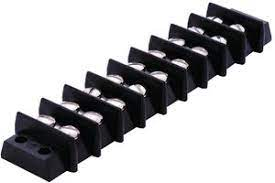If you are new to the world of connectors, you might not know exactly
what they are and what their purposes are. To begin with, here is an
explanation of Power Connectors. In this article, we will talk about the
different types of power connectors: Mains and DC Power Connectors, Terminal
Blocks, and Circular Connectors. We will also discuss how to identify different
types of power connectors. If you're still unsure, keep reading!
Power Connectors
Power connectors are essential for high-power devices, such as
batteries. Although input connectors are relatively standardized, the outputs
are not. Power plugs for devices that receive dc power must meet the requisite
electrical and mechanical specifications. This article discusses the different
types of power connectors available. This article will describe how power
connectors differ and how you can make use of them. To make a choice between
two or more different types of power connectors, you should take some time to
learn more about each one.
High-power card edge connectors are another type of power connector. The
HPCE (High Power Card Edge) connectors from Amphenol are cost-effective and
ideal for board-to-board and mezzanine power distribution applications. The
HPCE connectors feature a ventilated housing design to maintain the integrity
of the connector and are compatible with the latest AC/DC power supplies. The
HPCE series provides increased power density by integrating a PCB bridge.
Mains & DC Power Connectors
The differences between DC and mains power connectors lie in their
design. Normally, the length of the plug barrel is shorter than the jack
insertion depth. But, in many cases, the jacks do not need a Neutral conductor
to transfer power. The outer sleeve diameters for DC power connectors are
usually around 2.35mm or 5.5mm. The connectors are not required to have a
specific mating, but they must fit together properly.
Mains power connectors are often used for small appliances and for
connecting to a mains connection. They are also known as 'Barrel Connectors'.
DC power connectors feature an insulated cylindrical tip that accepts a pin
from their socket counterpart. This ensures safe, smooth connection and
disconnection. There are several standard DC power connectors, but you can
choose between the different types depending on your application. The
connectors can also be used to prevent accidental interconnection of different
sources.
Terminal Blocks
When selecting the right terminal blocks for connectors, be sure to
consider the orientation of wire entry. The orientation of wire entry depends
on the overall design layout of the enclosure. For example, you might choose a
horizontal terminal block, or you might opt for a vertical one. The orientation
of the wire entry will depend on how it will fit into the enclosure, as well as
its accessibility. Once you have decided which orientation to use, you will
need to consider its size and shape.
The screw terminals are generally used to secure the wire, while the
push-button versions are pressed to release the spring clamp. Some terminal
blocks also support direct insertion of wires. For easy wiring, these blocks
are an excellent choice. Just be sure to avoid touching the contacts of the
connector. If the contact points are close to each other, the terminals may
become loose. If you want to keep the connections of the connectors clean and
organized, use the pluggable type of terminal blocks.
Circular Connectors
The modular nature of circular connectors enables them to be designed to
meet a wide range of requirements, including extreme pressure, and dry/clean
environments. Manufacturers combine smaller size, greater flexibility, and high
mating cycles with maximum transmission reliability, and can also provide EMI
and common-mode filtering. In fact, HARTING's product line consists of more
than 500 types of circular connectors, including those designed for high-speed
data transfer.
Allied Electronics, an authorized distributor of circular connectors,
provides a broad selection of products made by leading manufacturers. These
include Molex, Turck, and Amphenol. The company also stocks a wide range of
connectors, such as D38999. If you need a particular circular connector, check
out our extensive selection of D38999 connectors. The product category of this
connector is extensive, making it a great choice for your industrial needs.
Network & Telecom Connectors
The different types of network and telecom connectors are used in a
variety of applications. They can be found wherever telephones are used to
transmit data. RJ45 connectors are most found on internet cables. RJ111
connectors are common phone connectors. In addition to the numerous types of
telecom connectors, many are used in industrial Ethernet applications. To learn
more, check out our glossary. This guide will also include helpful links to
network connectors and cable assemblies.
Ethernet and data connectors are essential to the functioning of many
different systems. They allow regular data transfer across a variety of
devices. Whether a device must transmit data from one end of a building to the
other, a dependable connection is necessary to keep operations running
smoothly. A dependable data connection is essential for office use, data
centers, internet service providers, and broadcast media. If you're looking to
buy the right network and telecom connectors, look no further than Allied
Electronics. Our selection of high-quality products will ensure a successful
project.







Post a Comment